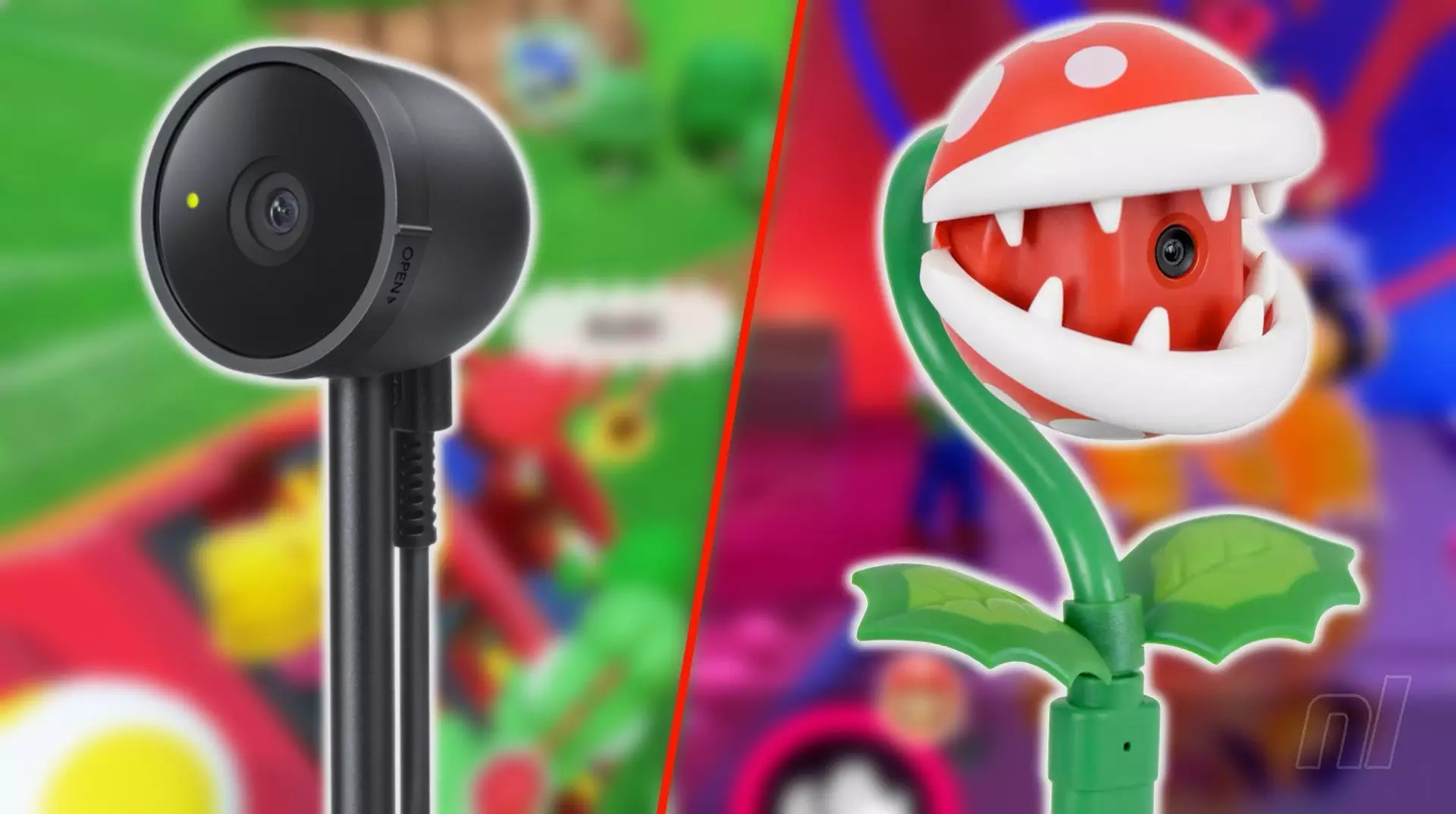With the arrival of the Nintendo Switch 2, excitement has reached unprecedented levels among gamers, craving new gaming experiences and enhanced interactions. Yet, amidst this enthusiasm, a common query looms: which USB cameras are compatible with the new console? Fortunately, Nintendo has made an effort to clarify its stance on USB camera compatibility, stating simply that users can utilize either the Nintendo Switch 2 camera accessory or any compatible USB-C camera. However, the simplicity of this message belies the complexity that gamers will encounter in practice.
The Complications of Compatibility
While it sounds straightforward, the reality is far from it. The caveat that not all cameras will function seamlessly with the Switch 2 creates a cloud of uncertainty. Gamers must navigate a tricky landscape where their preferred cameras may or may not perform as intended. Nintendo encourages users to refer to a compatibility test available in the console’s settings; however, this only serves to muddy the waters further, particularly for those who have yet to purchase a camera. It’s not just a matter of buying any accessory; consumers need to do their homework to make an informed decision.
Akin to scavenger hunts in classic video games, dedicated users have begun pooling their knowledge to create master lists of compatible cameras. These grassroots efforts come as a relief to many, laying out what choices gamers have while also detailing common pitfalls and disappointments. Brands that are traditionally viewed as reliable may not translate as nicely into the gaming ecosystem, with certain models completely failing to connect.
Exploring Successful Options
For those eager to discover functional options, there are shining stars among the sea of incompatibility. Brands like Logitech have emerged as the champions of camera compatibility. Offering a range from budget-friendly to high-end devices, these cameras have been noted for their successful integration with the Switch 2 system. For example, models such as the Aoni A20 and Logitech Brio series demonstrate a commitment to quality while remaining affordable. The diverse price points cater to a wide audience, ensuring that all gamers can find something within their financial reach.
Interestingly, it’s worth noting that USB-A cameras tend to introduce a bit of intrigue into the compatibility algorithm. For gamers who are equipped with older models, plugging them directly into the dock or using a USB-A to USB-C adapter has yielded mixed results. Some devices, like certain security cameras, have shown potential but ultimately left users frustrated. Without empirical data to guide these experiments, users must rely heavily on anecdotal evidence—a less-than-ideal method for making purchasing decisions.
The Obstacles You Might Face
Despite the genuine efforts made by various camera brands, some favorite names have been surprisingly omitted from the success lists. Brands like Elgato, Sony, and Microsoft appear to be notably absent from compatibility discussions. It’s astonishing that well-regarded models like the Logitech Brio 4K are also cited as problematic. Such revelations serve as a crucial reminder: higher price tags do not guarantee better performance. Enthusiasts must navigate the confusing landscape of technology and gaming with care to avoid disappointment.
A cautionary tale unfolds as users have voiced their frustrations while attempting to integrate third-party cameras into their Switch 2 experience. Initial excitement often leads to disheartenment as high expectations clash with actual results when attempting to use these devices. Experimenting with budget options or repurposing older equipment from the back of the closet could sometimes yield unexpected, albeit unreliable, results.
The Call to Action
As the community seeks clarity in the midst of ambiguous compatibility issues, it’s more important than ever for gamers to contribute their findings. Engaging with online forums and sharing experiences allows for a collective knowledge base that could benefit all users navigating this tech minefield. Whether you opt for the official Nintendo camera or decide to risk a third-party alternative, your insights could help steer fellow gamers towards successful choices.
The potential for utilizing USB cameras on the Switch 2 is undoubtedly promising, but be prepared for a journey filled with trial and error. The future of gameplay interactive options will depend on community engagement and knowledge sharing. So, what camera will you choose to enhance your Switch 2 experience? Let’s innovate together, one USB connection at a time!

